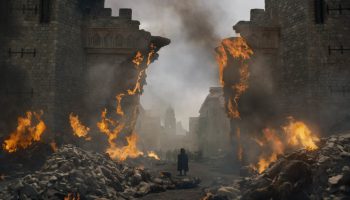Spoiler Warning: This article contains spoilers for Game of Thrones, Season 8 Episode 3: “The Long Night.”
In this week’s episode of Game of Thrones, “The Long Night,” viewers were treated to one of the most intense medievalesque battle sequences since the battle of Helm’s Deep in The Lord of the Rings: The Two Towers. The battle was plenty bloody (though surprisingly few main characters bit the dust—“plot armor” seems very tough to defeat indeed). But watching the battle unfold, I couldn’t help but wonder… why is everyone being so dumb?
Before you cry foul and mark me as yet another historian trying to “ruin” fantasy, I know that we’re not dealing with actual reality here. But even if you take the show’s universe at face value—wights and all—the tactics seen on the field of battle leave a lot to be desired. In fact, had they learned even a little bit from actual medieval tacticians, the battle could have gone a lot better for our heroes.
Probably the greatest, and most widely used manual of battle is the late-Roman book Epitoma Rei Militaris (The Epitome of Military Affairs). Over four volumes, author Publius Flavius Vegetius Renatus (known commonly as, simply, “Vegetius”) lays out everything an aspiring commander needs to know: how to raise, equip, and train an army, how to construct fortifications, and crucially for us, how to win or resist a siege. The army of the living follows none of his advice.
A good place to start is one of Vegetius’ key maxims:
“what benefits you harms the enemy, and what helps him always hinders you.”
So let’s take stock of the advantages of each side—discounting any and all plot armor:
The Army of the Dead
1) Already dead
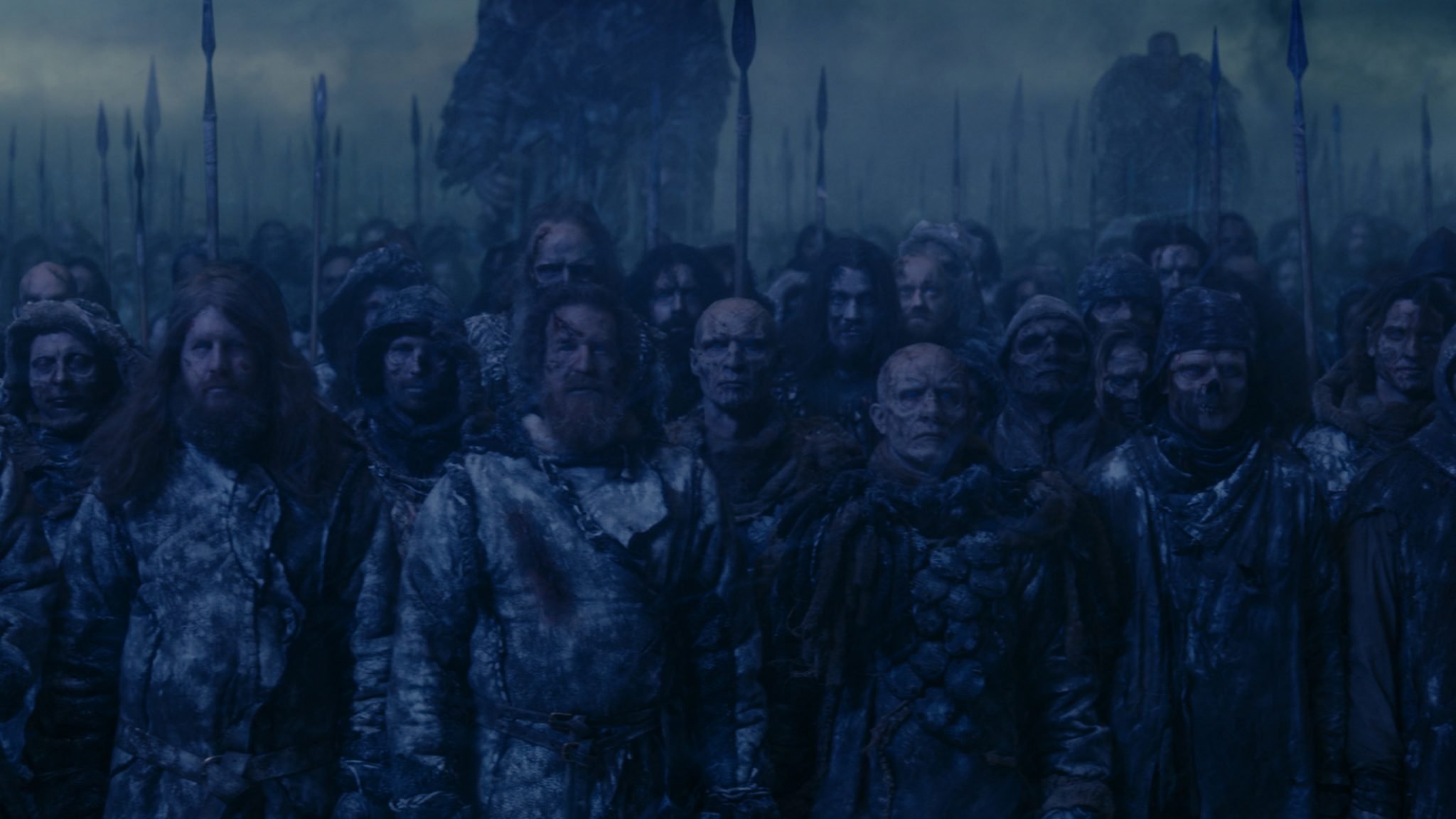
Yes, it’s a bit obvious. But this is actually their chief advantage; the Army of the Dead are, as the name would imply, dead. They’re in no hurry. They have no need to eat. By contrast, supplying a medieval army was of the utmost concern to medieval commanders, as armies lived or died on their stomachs. Vegetius writes at length about protecting the supply chain, and implores commanders to have their men eat before a battle. The attacking English armies in the Hundred Years war went to great lengths to scour the countryside (in a tactic they called chevauchée) for food and supplies. They did this to feed their people (as they were essentially cut off from supply lines) and to weaken their French opponents.
Also, the army of the dead don’t, so far as we know, catch diseases. “Camp diseases” like typhus could devastate both sides during a long siege. During the siege of Baza in 1489, for example, the attacking forces lost about 3,000 people fighting the enemy, but a further 17,000 to typhus.
2) An unfathomable number of light infantry (horde of surprisingly spry undead zombies)
There were no standing armies for the vast majority of the Middle Ages. Medieval light infantry were often conscripted from the local populace, and were therefore only rarely effective on the battlefield—at least by modern standards. Perhaps if they had been bestowed with an unrelenting hunger to rend the flesh of the living from their very bones, they might have been a bit more effective.
3) Around 100 heavy infantry with javelins (White Walkers)
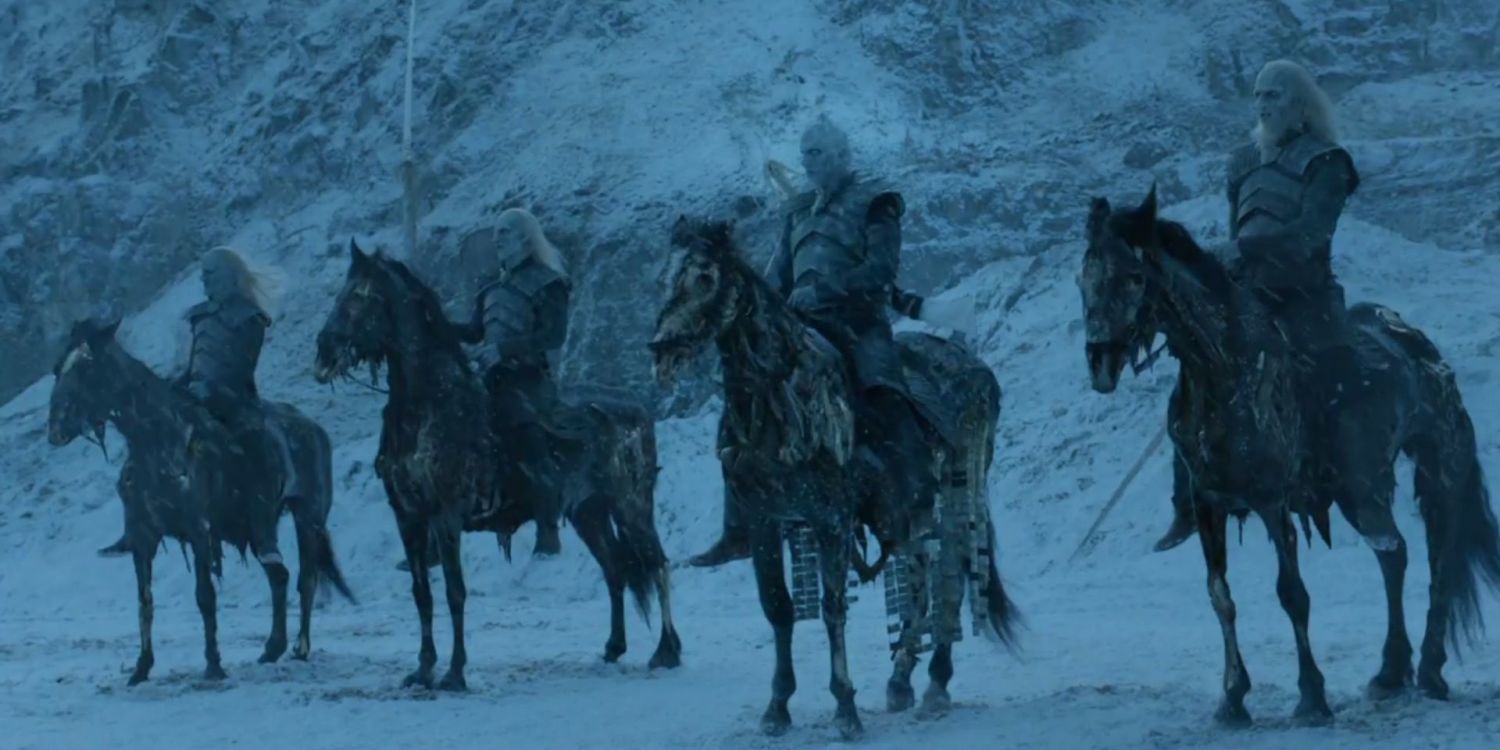
We’ve only seen the White Walkers fight on foot, though we have seen them on undead-horseback; clearly that means they must fight like the Anglo-Saxons did at the battle of Hastings in 1066—riding into battle on horses, but dismounting to fight on foot.
4) One undead giant
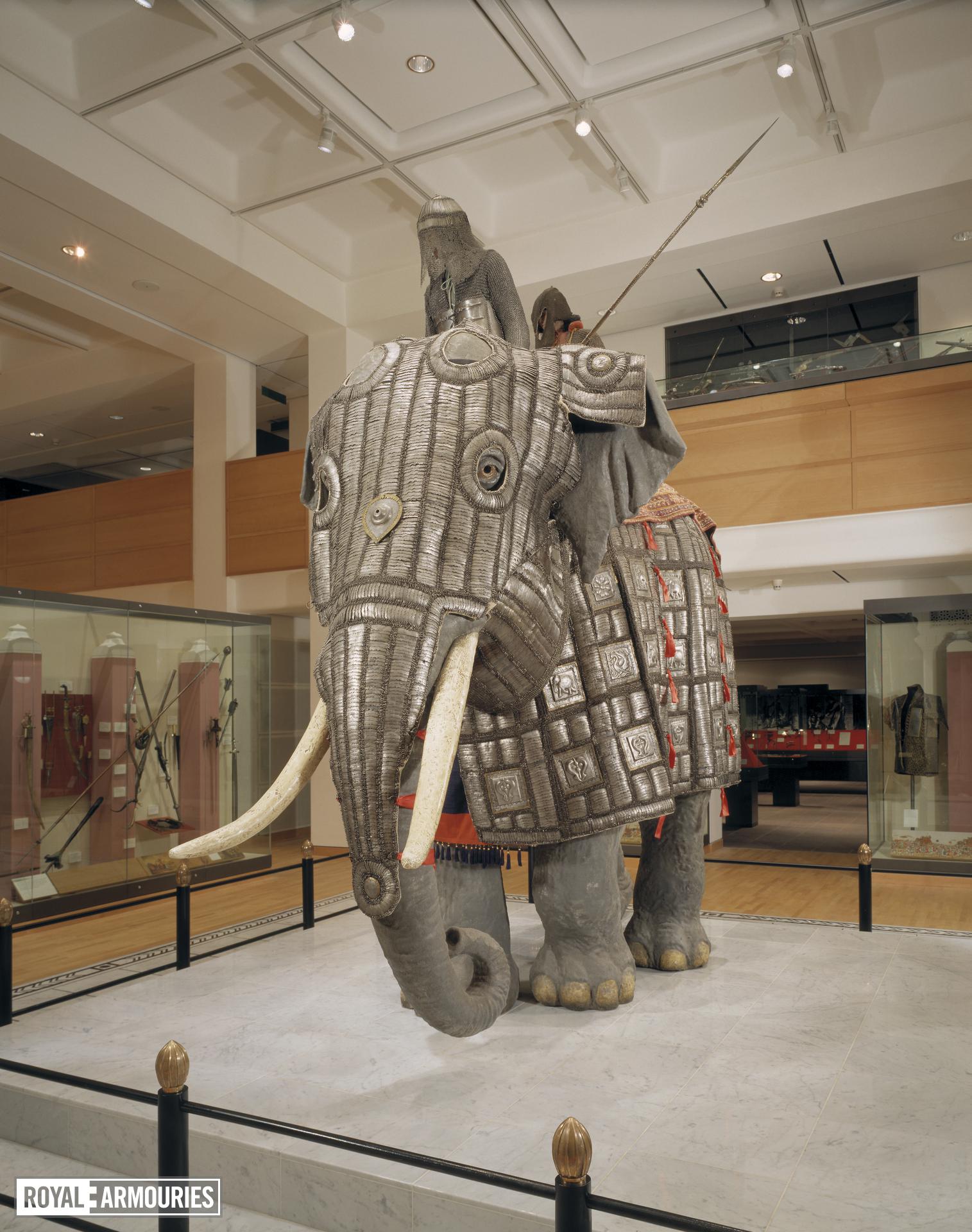
Vegetius had very little to say about undead giants, but he did talk at great length about how to use, and to defeat, the closest thing their world saw: War Elephants. He said:
“Elephants by their vast size, horrible noise and the novelty of their form are at first very terrible both to men and horses.”
He does not recommend deploying Mormonts against them (no matter how effective)—instead, they should be engaged by swift horsemen, infantry with ranged weapons, or ballistae (essentially giant siege crossbows). Since Cersei (and perhaps the showrunners) bemoan the fact that that she did not get her elephants, this is probably the closest we’re going to get.
5) Total disregard for their own safety
Morale in battle is incredibly important to Vegetius—as he wrote:
“There are innumerable instances where the party that gave least way to despair was esteemed the conqueror.”
As a rule, even the best trained warrior will look askance when asked to lay down and die on a fiery trench so that their compatriots can walk over them. Some medieval stories, like the Song of Roland, include characters who seem to have total disregard for their safety, but I take heroic narratives like that with a grain of salt. So for that, advantage: team dead.
6) One nigh-unkillable lich king with a world-class throwing arm and a pet undead dragon.
Sadly, Vegetius does not have much to say about either Night Kings or dragons, though he does praise the effectiveness of javelineers. So, that’s something?
7) Attacker chooses the time and season of battle

Battles in winter were rare in the Middle Ages, since, as a rule, the combatants were not fighting ice zombies. And the show illustrated why: fighting in wintry weather is awful for anyone not already dead. It makes battlefield communication—already a difficult task—nigh impossible, it means there were fewer supplies to sustain an army to be found across the countryside, roads became difficult or impassible, and morale plummeted. Holy Roman Emperor Charlemagne famously planned his campaigns for the warmer months after a winter’s rest. So, advantage: dead.
Night battles were also extremely rare in the Middle Ages, due to some of the same frustrations viewers had: it’s damned difficult to tell what is going on and to differentiate friend from foe. One notable exception was the Night Attack at Târgoviște in 1462, in which Vlad the Impaler (yes, that Vlad the Impaler), successfully ambushed the forces of the Ottoman Sultan, Mehmed II, at night. For Vegetius, nighttime is meant for resting your cohort, or spying on your enemy.
8) Zombie attrition
Until the Night King dies, he can add any casualty from the Army of the Living to his. Even Vegetius might have been flummoxed by this one.
Key Disadvantages:
1) Chess rules
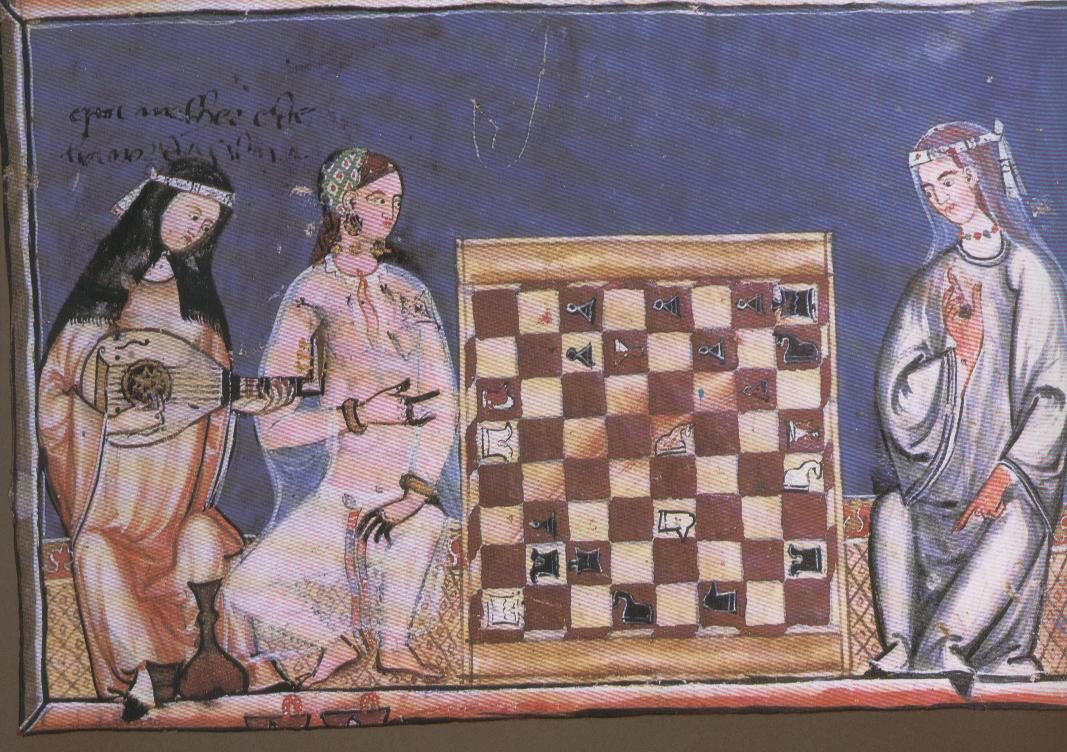
If the Night King dies, his entire army crumbles to dust. Game over. While that is a core mechanic of chess (a game played widely across the Middle Ages), it is not usually not the case in reality. That said, several medieval monarchs did die in battle. Those monarchs who did meet their end at the end of an enemy’s weapon very, very rarely won that battle posthumously—despite what Hollywood may tell you, Kings rarely led their forces from the front; if the king is forced to engage in combat, things are not going well. If they are in combat, it quickly becomes very difficult to maintain morale, cohesion, and battlefield communication. One of the very few who did win after their death is Richard the Lionheart of England, who died while laying siege to a castle in France, and who, according to the chroniclers, pardoned his killer before he died. And then they were killed anyway.
The Army of the Living
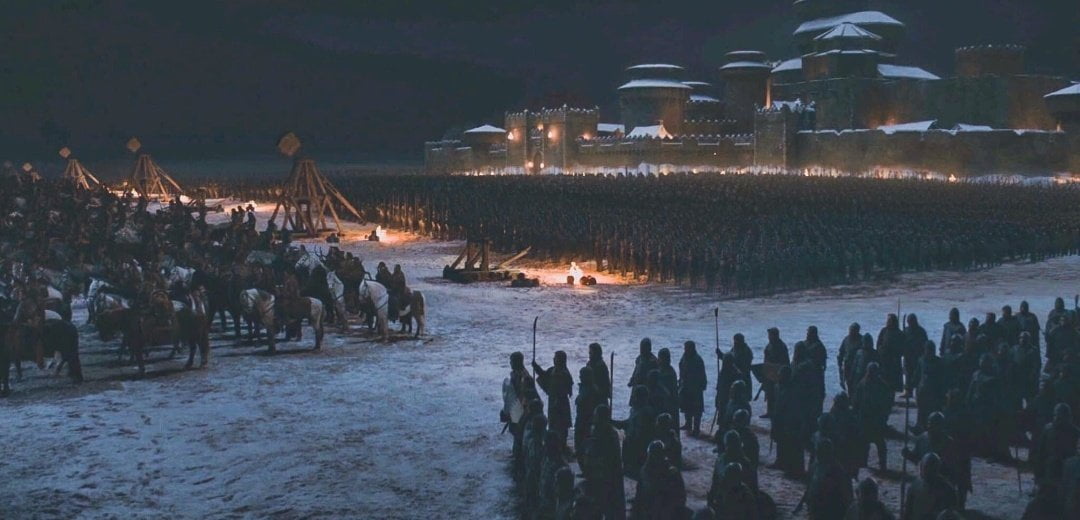
1) Defender chooses the field of battle: Winterfell
Being able to choose the place of a battle is no small matter. As Vegetius says, “The nature of the ground is often of more consequence than courage.” Medieval people built castles like Winterfell for a very good reason—they were one of the most effective pieces of military architecture ever constructed. Vegetius devotes a whole volume to the defense and assault of fortifications like Winterfell.
Most castles built never fell to an enemy. Those that did, did not often fall due to direct assault; they much more commonly did because of starvation, negotiation, or subterfuge. Well-designed castles are engineered to force your opponent to fight at every possible disadvantage: weathering volleys of arrows from high walls, covered in streams of burning tar, or fruitlessly pushing through narrow gate after narrow gate. This should put the Night King on the back foot.
2) 100,000 light cavalry (Dothraki Screamers)
Note, all these numbers were drawn from this article on The Verge which pulled them from Reddit, so they—just like medieval chroniclers’ counts of army sizes—should be taken with a big grain of salt.

“The Dothraki were actually fashioned as an amalgam of a number of steppe and plains cultures… Mongols and Huns, certainly, but also Alans, Sioux, Cheyenne, and various other Amerindian tribes… seasoned with a dash of pure fantasy.”
Leaving aside just how very racist it is to amalgamate those vastly disparate cultures in this way, many steppe and plains cultures were famous for their light cavalry, about which Vegetius has quite a lot to say:
“The light cavalry, consisting of the archers and those who have no cuirasses [i.e., chest armor], should be placed at a greater distance. The best and heaviest horse are to cover the flanks of the foot, and the light horse are posted as abovementioned to surround and disorder the enemy’s wings. A general should know what part of his own cavalry is most proper to oppose any particular squadrons or troops of the enemy.”
In summary, light cavalry should be used primarily to harass the enemy’s flanks and fill them with arrows.
3) 8,000 elite heavy spear infantry (the Unsullied), 10,000 heavy infantry (Knights of the Vale) and 10,000 light infantry with bows (Northerners)
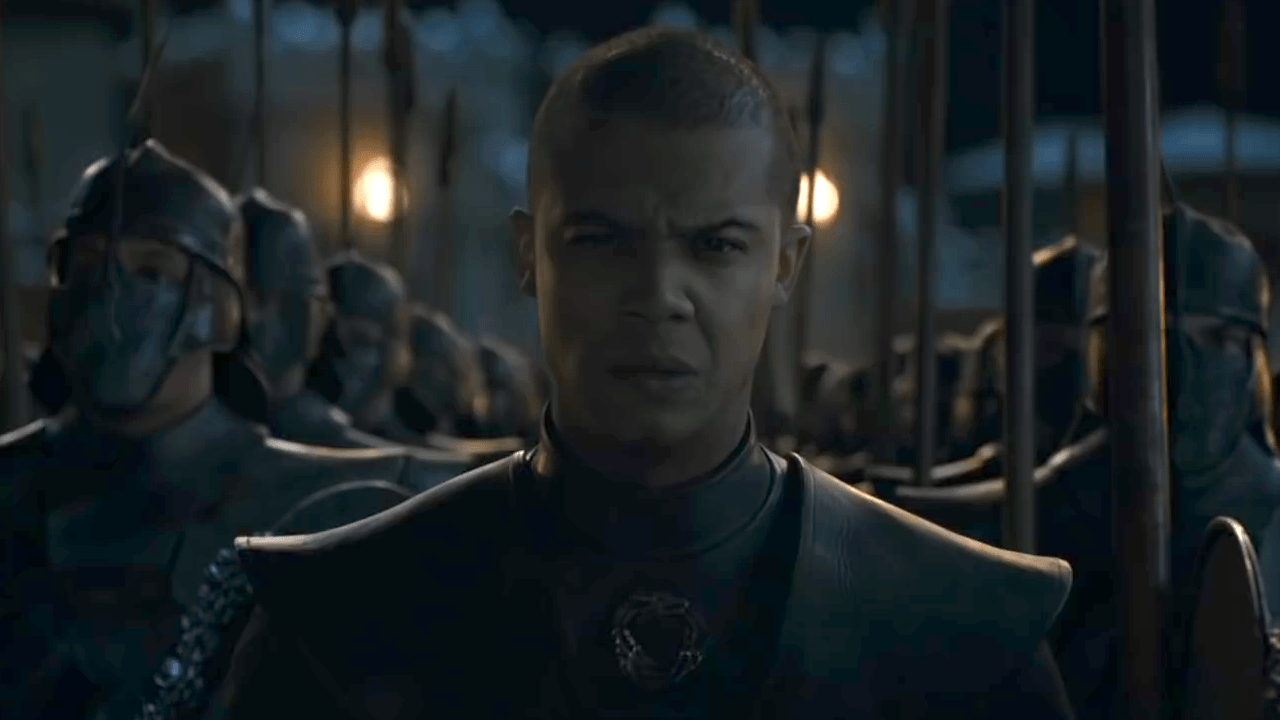
Visually, the Unsullied most closely resemble the armies of Alexander the Great. They are incredibly disciplined, packed blocks of spearmen with large shields acting in a phalanx formation. These tactics were much more common in the ancient world of the Sumerians, Seleucids, or Greeks than on medieval battlefields. However, despite their ancient pedigree, they could be potentially very effective at staving off a horde of undead. A key part of phalanx tactics was creating a massed wall of spears and shields that was incredibly difficult to penetrate. It was designed explicitly to push against the enemy formations arrayed at them, and resist whatever was thrown at them.
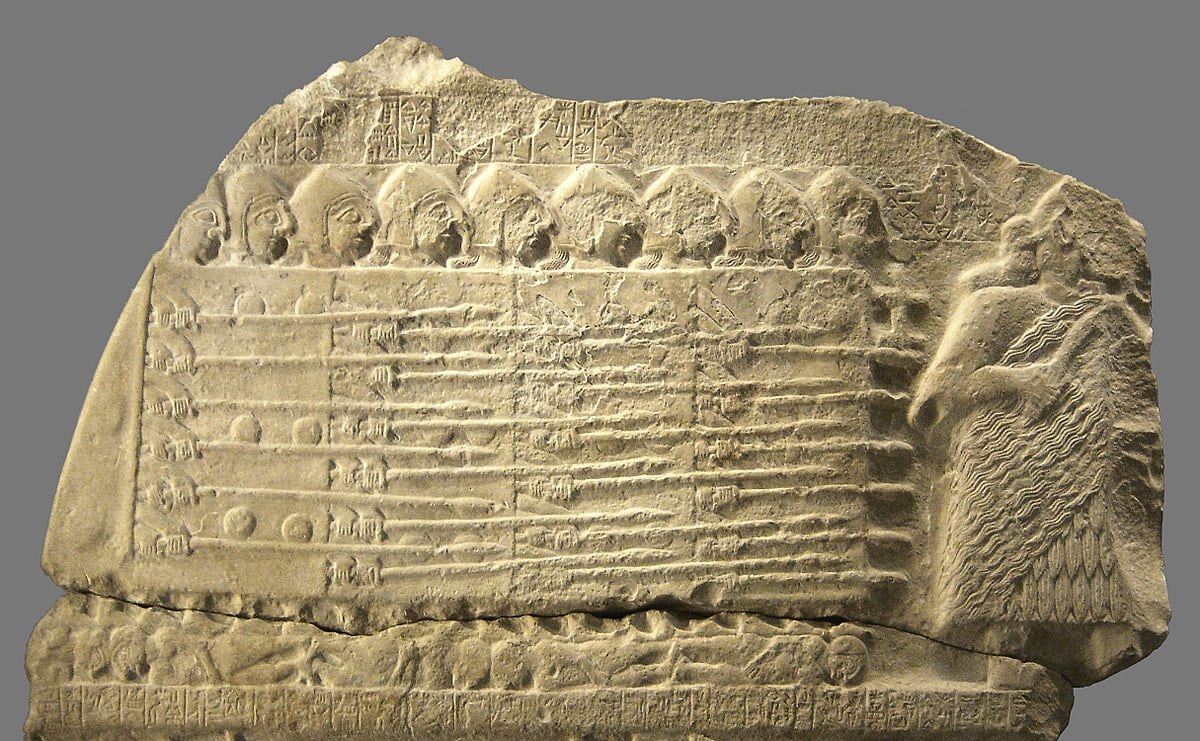
By contrast, medieval men-at-arms like the Knights of the Vale or the Northerners, armed as they are with shorter weapons and smaller shields, would probably be less effective in the field against a zombie horde. These were often the backbone of medieval armies and, when well-equipped and trained, could be incredibly effective—though not necessarily against a tsunami of the dead.
4) Catapults
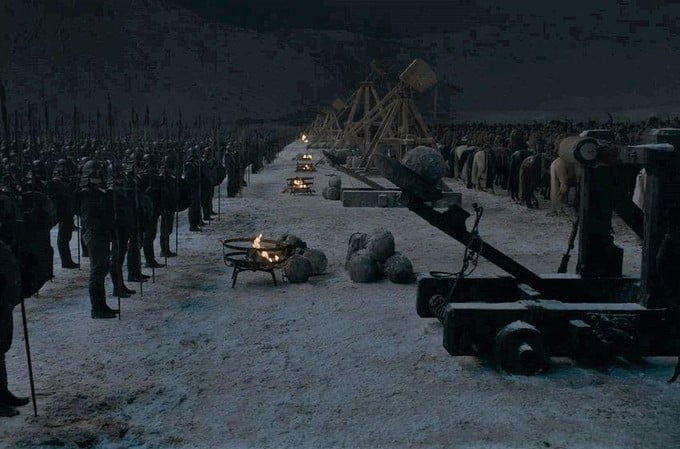
Vegetius calls these engines of war “mangonels” or “onagers,” but you know exactly what he means when he says:
“the mangonel shoots stones, and throws various weights in proportion to the thickness of the sinews and size of the stones. The larger the machine, the bigger the stones it hurls like a thunderbolt.”
These weapons were not limited to bringing down castle walls (though they were used for that), but commonly used by the Romans and people across the medieval world as field weapons to break enemy formations and terrify opposing forces.
5) One all-knowing Three Eyed Raven.
Vegetius would look very approvingly on an omniscient supernatural being, as military intelligence is of utmost importance: “It is difficult to beat someone who can form a true estimate of his own and the enemy’s forces.” I suspect he might look less well on using your entire military intelligence service as bait.
6) One 5’1” unstoppable assassin.
Arya Stark joined—and left—the Faceless Men of Braavos, an order of assassins clearly based on the group of Nizari Ismaili Muslims who were the basis for the “assassin” legend. This group was a religious minority who were able, for sixty years in the 11th and 12th centuries, to resist conquest by their vastly more powerful enemies by carrying out daring public assassinations (though contrary to the popular legend, never for money). Legends grew about their abilities, particularly because they had a flair for the dramatic. For example, one tale recounts that the Seljuk Sultan Ahmad Sanjar, one of their opponents, awoke one day with a dagger stuck in the floor of his tent. To the dagger was attached a message, roughly: had I wished the Sultan harm, instead of this dagger being stuck in the hard ground it could have been in his soft breast. The Sultan, allegedly, came to an understanding with them soon thereafter.
Their daring helped them survive. Though they obviously did not have the magical abilities Arya has, they were happy for their enemies to think they did.
7) Two Oedipus complexes riding attack helicopters with teeth (Jon and Daenerys).
Though Vegetius has little to say about dragons (or about sleeping with your nephew, for that matter), he does advise defenders of a siege to “procure bitumen, sulphur, liquid pitch and the oil which they call ‘burning-oil’, for burning the machines of the enemy.” I suspect that he would approve of that being delivered from a reptile the size of a train.
8) One Lyanna Mormont.

Enough said.
What the Army of the Dead Should Have Done
Waited. They should have just waited.
For a legion bound together by ice magic, the Army of the Dead really had no chill. Aside from the fact that, had the Night King waited just a few more years to breach the Wall, everyone in Westeros would likely have all killed each other in their sleep anyway, he had no reason to assault Winterfell. The best way for any attacker to resolve a siege is without much fighting at all: simply surround the castle, cut off all exits, and let starvation and disease set in. Vegetius devotes more of his book on siege warfare to this than to any other topic; he said:
“It is preferable to subdue an enemy by famine, raids and terror, than in battle where fortune tends to have more influence than bravery.”
For a medieval commander, a castle with ample supplies can last forever, but one ill-prepared for a long siege will fall without a fight. And as soon as you choose to fight, you open yourself to the possibility of failure despite having all the advantages. So, I can think of no more appropriate way for an army of the dead to behave than to entomb their enemy and simply wait. Winter is here, after all.
What the Army of the Living Should Have Done
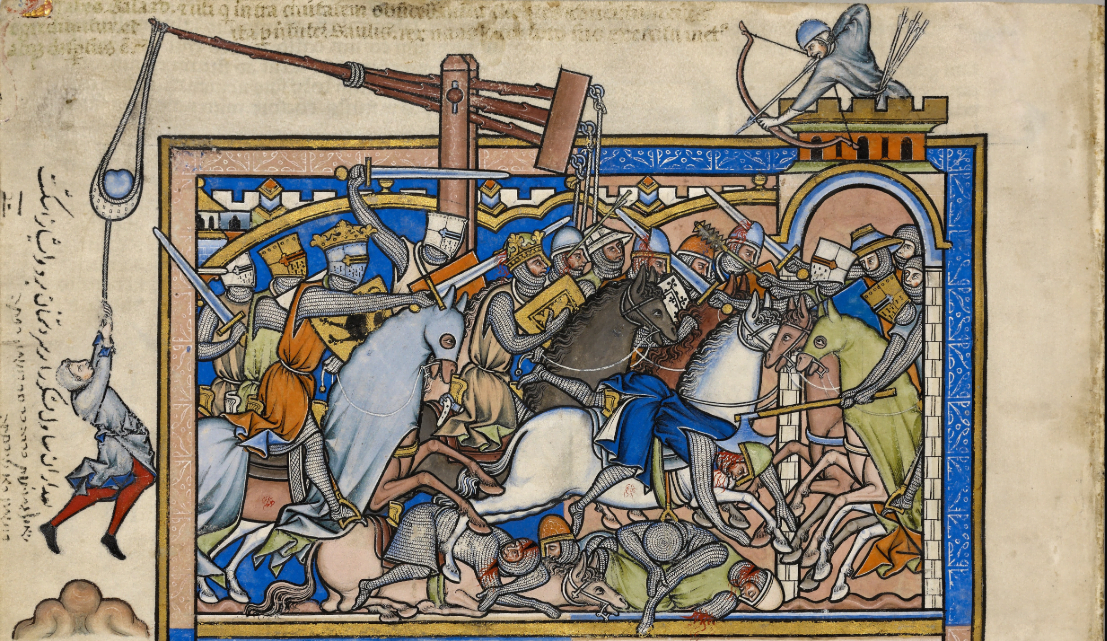
First things first: defend. The entire portion of the battle held outside the walls makes little sense outside of a dramatic, theatrical context. Knowing fully well that every individual who falls to the undead’s blades can immediately be raised as a member of their horde makes it critical to fight defensively and ensure that ten wights fall for each member of the living. As Vegetius recommends:
“When however a violent assault is prepared against forts and cities, deadly battles are fought with mutual danger to both sides but greater bloodshed for the assailants.”
That means staying in the walls of Winterfell; filling the battlements with archers and heavy infantry. If the undead wanted to, as they did, construct a human pyramid, World War Z-style, to reach the battlements, fine—treat them as Vegetius recommends:
“shoot from the larger catapults lighted fire-darts and fire-spears so that […] the flame may be planted inside it.”
Fresh warriors should always be at the ready in the courtyard to relieve those on the walls and to take the place of any who fall, so that holes in the defenses don’t develop. And if that pesky giant or dragon were to break down the gate or blow up a wall, Vegetius has a recommendation for that too:
“Countless examples demonstrate that enemies have often been slain to a man after they had invaded a city. This is the certain result, if the citizens hold on to the walls and towers and occupy the higher ground.”
Though this is also where the phalanx formations of the Unsullied would come in handy. Instead of dying valiantly in droves to cover the retreat of their white counterparts, their elite discipline could keep the dead from the city entirely.
And finally, their decision to place their catapults in front of the city walls where they could be put out of commission within the first twenty minutes of the battle is utterly unexplainable. Catapults should be placed on the walls, in the towers, and in the courtyard; an able commander wants those engines protected and working hard from the moment the battle begins until it ends. Vegetius praises the utility of catapults when defending against a siege:
“Catapults and mangonels, provided they are tuned very carefully by experts, surpass everything else. No amount of courage or armour can defend soldiers from them. For like a thunderbolt they generally either smash or pierce whatever they hit.”
Undead giant? I’ve got a catapult for that. White Walker with a javelin? Catapult. Uppity undead dragon? Catapult. When a problem comes along, you must catapult it. If there was a problem, yo, I’ll solve it. Check out my catapult while the DJ revolves it.
But what about the Dothraki?
What, indeed. The show showed us, with mournful music and beautiful cinematography, the great Dothraki horde charging headlong into the army of the dead. This was the opening gambit of the Army of the Living, and predictably, the Dothraki were swallowed without a trace. I was reminded of that other famous, doomed light cavalry charge—the “Charge of the Light Brigade” in the Crimean War of 1854 in which the British light cavalry were led in a suicidal charge against the Russian artillery. Alfred, Lord Tennyson rendered the doomed British cavalrymen into stoic heroes in his famous poem of the same name. But the best summation of that charge—and of the charge of the Dothraki in this episode, was uttered by French general Pierre François Bosquet:
C’est magnifique, mais ce n’est pas la guerre: c’est de la folie. (It is magnificent, but it is not war: it’s madness.)
But what should they have done? Winterfell is surely far too small to hold a hundred thousand horsemen, and cooping them up behind the walls seems like a wasted opportunity—you can ride out to attack an army trying to starve you, but they are not much use against one assaulting the castle.
So instead, they should have done what they do best, and what Vegetius recommends light cavalry do: stay outside the walls. Harass the enemy flanks, shoot from afar, and use their horses’ mobility to outrun even the most determined ice-zombie. If they can pull the attention of a giant, a white walker, or even the Night King himself away from the castle, all the better. But their goal should have been the goal of any skirmishing force: damage, disrupt, and live to fight another day.
In laying this out, I may seem like another smug historian playing Monday-morning epic fantasy general. Fair enough. But the pointless deaths of the Dothraki and The Unsullied (except perhaps to heighten the tension and blunt Daenerys’ advantage going forward) are not just historical quibbles. Their deaths represent yet another instance where film and TV portray people of color—even those from warrior cultures—as so much cannon fodder. Whether fighting in service to, or against white people, they die in droves in Glory, Zulu, 300, The Alamo, and practically every western ever made. Princess Weekes put it well at The Mary Sue:
Watching them [the Dothraki] get slaughtered, and then the Unsullied basically holding down the line and staring into the face of an endless death so that the retreat can be protected, made me feel both proud and sad—proud because they died as warriors, which is how they were in life, but sad that, once again, the way to prove the strength of magical baddies was to put them up against POC and have those POC get slaughtered with prejudice.
Most of my concerns are admittedly quibbles, but it is on this front—where Game of Thrones already suffers from a lack of strong representation by characters of color, and where Daenerys’ story arc represents yet another racist “white savior” trope—that Game of Thrones and its inevitable legion of spin-offs, prequels, sequels, and imitators, needs to do better.
Thanks to Dr. Nick Dupras of Northern Michigan University for lending his expertise as a special editor of this article.
If you enjoyed that article, please share it with your history-loving friends on Facebook, or on Twitter! And be sure to subscribe here to receive every new article from The Public Medievalist the moment it launches.



